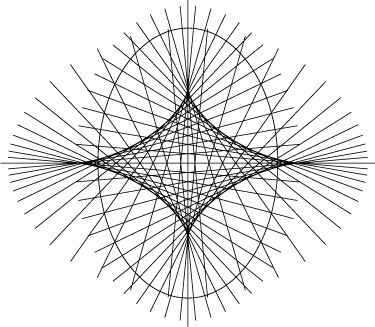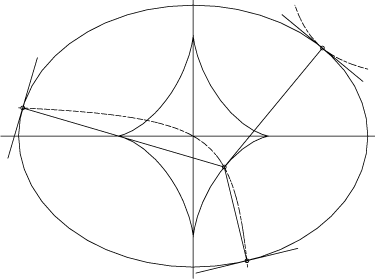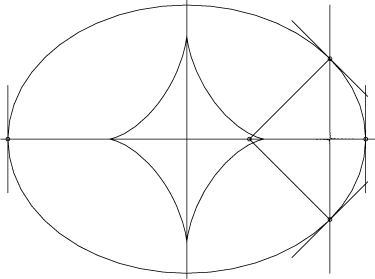- About MAA
- Membership
- MAA Publications
- Periodicals
- Blogs
- MAA Book Series
- MAA Press (an imprint of the AMS)
- MAA Notes
- MAA Reviews
- Mathematical Communication
- Information for Libraries
- Author Resources
- Advertise with MAA
- Meetings
- Competitions
- Programs
- Communities
- MAA Sections
- SIGMAA
- MAA Connect
- Students
- MAA Awards
- Awards Booklets
- Writing Awards
- Teaching Awards
- Service Awards
- Research Awards
- Lecture Awards
- Putnam Competition Individual and Team Winners
- D. E. Shaw Group AMC 8 Awards & Certificates
- Maryam Mirzakhani AMC 10 A Awards & Certificates
- Two Sigma AMC 10 B Awards & Certificates
- Jane Street AMC 12 A Awards & Certificates
- Akamai AMC 12 B Awards & Certificates
- High School Teachers
- News
You are here
Apollonius's Ellipse and Evolute Revisited - The Alternative Approach to the Evolute
Figure 3 in the previous section shows the osculating circle and the normal and tangent lines for a point in the first quadrant. Notice that the normal line to the ellipse is a tangent line to its evolute, a property which leads to an alternative way to define the evolute of a curve. In fact the center of the osculating circle may also be thought of in the following way. For a fixed point P on the curve, one may construct two normals to the curve, one at P and another at a nearby point on the curve. The center of the osculating circle is the limit of the intersection of these two normals as the nearby point approaches P. The evolute is thus the envelope of the curve's normals, illustrated in Figure 4 for a case in which the eccentricity of the ellipse is sufficient to cause the evolute to extend outside the ellipse along the minor axes. Hence if one is looking for the points where two normals coalesce into a single normal leading to a change in the number of normals passing through those points, one would look at the evolute. This was Apollonius' approach to the problem.

FIGURE 4: The evolute as the envelope of the normals to the ellipse.
One can also derive the equation of the evolute from this alternative idea as the curve traced out by the the limiting intersection point of two successive normals to the curve, which operationally defines the envelope of the normal lines. One can write down the equation of the normal line to the parametrized ellipse, and then its neighbor at a nearby point on the ellipse, find their intersection, and then take the limit as the nearby point approaches the original one. Even without direct computation one easily sees that the unnormalized normal vector n(t) = áb cos(t), a sin(t)ñ is orthogonal to the tangent vector r'(t)=á-asin(t),bcos(t)ñ of the parametrized position vector r(t)=áacos(t),bsin(t)ñ, so the slope of the normal line is asin(t)/(bcos(t)). From the point-slope equation of the normal line with r(t) as the point, one therefore has
|
Let the ellipse and its evolute be parametrized as above and let the point O(x0,y0) be on the evolute, i.e.
|
(5) |
|
(6) |

FIGURE 5: As the point approaches the evolute from inside (not at one of its vertices), two of the four normals coallesce as one branch of the hyperbola of Apollonius becomes tangent to the ellipse, in the first quadrant in the configuration shown here.
To summarize:
If a point lies within the evolute of an ellipse, then four distinct normals can be drawn to the ellipse. If the point lies on the evolute, but not at a cusp, then precisely three normals can be drawn, and if the point is at a cusp or outside the evolute only two normals can be drawn.

FIGURE 6: As the point approaches one of the axes inside the evolute, the hyperbola of Apollo9nius degenerates to its pair of horizontal and vertical asymptotes, one coinciding with this axis. As the point on the axis approaches a cusp of the volute from inside along this axis, the other asymptote becomes tangent to the ellipse (the vertical asymptote here), and three of the four normals from the given point (at the right of the ellipse here) coalesce into one (not shown).
Frederick Hartmann and Robert Jantzen, "Apollonius's Ellipse and Evolute Revisited - The Alternative Approach to the Evolute," Convergence (August 2010)




